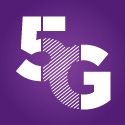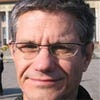
YRP Nobi seems an unlikely place to make technology history. The seaside town two hours from Tokyo is host to Yokosuka Research Park, where Japan is making its bid to win the 5G race. It is here that NTT DoCoMo's 5G Lab is running what is almost certainly the world's biggest 5G indoor trial.
The Japanese government has set the goal of bringing 5G to the world in time for the Tokyo Olympics in July 2020 -- a high-profile target that is not just about creating an Olympics moment but is also about dealing Japan Inc. back into global telecoms.
For this reason pressure is being felt most by NTT DoCoMo Inc. (NYSE: DCM), the dominant player in Japanese mobile. To hit the 2020 target, it has signed on eight vendors as 5G partners. Along with global heavyweights Alcatel-Lucent (NYSE: ALU), Ericsson AB (Nasdaq: ERIC), Huawei Technologies Co. Ltd. , Nokia Corp. (NYSE: NOK) and Samsung Electronics Co. Ltd. (Korea: SEC), it has also teamed up with local firms Fujitsu Ltd. (Tokyo: 6702; London: FUJ; OTC: FJTSY), Mitsubishi Corp. and NEC Corp. (Tokyo: 6701).
For all the intricacies of 5G, players are right now heavily focused on one thing -- the radio propagation.
"That's the most complex part," says Takehiro Nakamura, managing director of the 5G Laboratory. With 5G, radio access technology enters the unknown territory of millimeter-wave bands, possibly as high as 100GHz.
"No-one knows what the propagation characteristics are in the higher spectrum bands," Nakamura says.
At high frequencies even the human body could be an impediment to propagation. In lower-band spectrum, the signal will go around the body, but no-one is quite sure how high frequency radio will behave when confronted with homo sapiens. Then there are the traditional problems like rain, trees and the angle of arrival (AoA), which also need to be dealt with.
Want to know more about 5G? Check out our 5G content channel here on Light Reading.
Beam-forming looks to be the most promising technology for overcoming millimeter wave path loss, and that means Massive MIMO is getting a good workout, with several vendors working on solutions.
One is NEC's OFDM-based Massive MIMO in 5GHz, using an advanced antenna system (AAS) configuration with 128 antenna elements running 16 MIMO streams. Another is Fujitsu's distributed antenna system at 44GHz, while Samsung is testing analog-digital and user equipment (UE) beam-forming at 28GHz. Mitsubishi is investigating multi-beam technology multiplexing for ultra-high data rates.
Both Ericsson and Nokia are testing millimeter wave gear. Ericsson is trialing a variation of LTE OFDM in 15GHz that, according to DoCoMo, has achieved 4.5 Gbit/s in a field trial. Nokia has topped 2 Gbit/s with its lens antenna in the 70GHz band. It is also testing dense small cells and wireless backhaul.
Alcatel-Lucent is experimenting with its UF-OFDM technology, which it believes can support both high-frequency data and M2M. (See Alcatel-Lucent, Huawei Pitch 5G Radio Technologies .)
As well as those, NTT DoCoMo has also worked up its own candidate technology -- non-orthogonal multiple access (NOMA) -- which works in the 3.9GHz band.
Its advantage is it is backward-compatible with legacy terminals and provides good performance at the edge.
Later this year DoCoMo will move on to testing data performance with what Nakamura calls a "digital beam form unit," using AAS.
— Robert Clark, contributing editor, special to Light Reading
Read more about:
AsiaAbout the Author(s)
You May Also Like




_International_Software_Products.jpeg?width=300&auto=webp&quality=80&disable=upscale)







